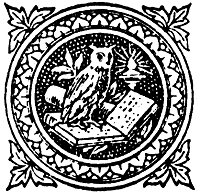ISSN 1750-4953
Marginalia
Home
About Marginalia
Current Issue
Archived Issues
Notes to Contributors
Links to Other Online Journals
Marginalia -- The Website of the MRG
Marginalia
Home
About Marginalia
Current Issue
Archived Issues
Notes to Contributors
Links to Other Online Journals
Marginalia -- The Website of the MRG
Kantik Ghosh
The Wycliffite Heresy: Authority and the Interpretation of Texts
362 pages. Cambridge University Press, 2001. �48.00 ($70.00)
ISBN: 0521807204
The Wycliffite Heresy: Authority and the Interpretation of Texts
362 pages. Cambridge University Press, 2001. �48.00 ($70.00)
ISBN: 0521807204
Though Lollardy is frequently and in many ways rightly labelled a populist, anti-intellectual heresy, Kantik Ghosh has provided a compelling argument for the Wycliffite movement�s transformation of late-medieval intellectual culture in England. Ghosh considers orthodox and Lollard writers in the context of their ongoing dialogue about the interpretation of the Bible, and he focuses on their ideological motivations and common concerns with the literal sense, divine intention, tradition, the nature of academic discourse, and the textuality of the Bible. His texts, both Latin and English, are positioned around three temporal nodes of the Wycliffite movement: the early academic debates in the 1370s-1380s, then the polemical debates after vernacular Lollardy began to be perceived as a threat around the turn of the century, and the aftermath in the 1420s of the earlier attempts at repression and academic censorship. In tracing this dialogue about biblical meaning, Ghosh reveals how the institutional response to Lollardy consisted not merely of repression, but also of �a reassessment and reconfiguration�in terms both of values and methodologies�of late-medieval intellectuality� (p.216).
A fundamental dichotomy inherited by orthodox and Lollard alike consists of what Ghosh sees as two competing approaches to biblical interpretation: what he terms a sciential approach which emphasises a rationalist, academic study of the Bible that pays close attention to the text and context; and a sapiential approach which stresses non-rational apprehension of divine meaning stemming from personal revelation or authoritative tradition. This methodological polarity, so central to Lollard hermeneutical thought and practice, is repeatedly invoked by Ghosh as he points out recurring tensions between positivism and scepticism, monologism and dialogism, objectivity and subjectivity, and a hermeneutics of the text and a hermeneutics of the interpreter�s life. His meticulously close readings of Wyclif�s De Veritate Sacrae Scripturae, the Wycliffite sermons, and the anti-Wycflittie polemicist Thomas Netter bring out similarly troubled vacillations between these two interpretive frameworks, while his discussion of William Woodford, Richard Ullerston, William Butler, Thomas Palmer, and Nicholas Love persuasively demonstrates how these thinkers� differing perceptions of the Lollard threat formed their attitudes towards textual and human authority in interpretation. The picture that emerges from Ghosh�s argument is that of a culture caught between two hermeneutic worlds, a crisis for Christian meaning that became increasingly difficult for writers to ignore.
Though published a few years ago, Ghosh�s book remains a provocative and challenging call for further scholarship in fifteenth-century English intellectual culture. There is much here to explore further, especially with regards to the way late-medieval thinkers deploy the idea of authoritative tradition and also the effects of Lollard popularization of academic modes of discourse. By ably outlining the dialogue between writers with different institutional and ideological commitments and Lollardy�s destabilisation of academic culture, Ghosh has contributed admirably to our growing sense of the transformations of orthodoxy and �late-medieval religio-intellectual mentalit�s� (p. 212) in England after Lollardy.
A fundamental dichotomy inherited by orthodox and Lollard alike consists of what Ghosh sees as two competing approaches to biblical interpretation: what he terms a sciential approach which emphasises a rationalist, academic study of the Bible that pays close attention to the text and context; and a sapiential approach which stresses non-rational apprehension of divine meaning stemming from personal revelation or authoritative tradition. This methodological polarity, so central to Lollard hermeneutical thought and practice, is repeatedly invoked by Ghosh as he points out recurring tensions between positivism and scepticism, monologism and dialogism, objectivity and subjectivity, and a hermeneutics of the text and a hermeneutics of the interpreter�s life. His meticulously close readings of Wyclif�s De Veritate Sacrae Scripturae, the Wycliffite sermons, and the anti-Wycflittie polemicist Thomas Netter bring out similarly troubled vacillations between these two interpretive frameworks, while his discussion of William Woodford, Richard Ullerston, William Butler, Thomas Palmer, and Nicholas Love persuasively demonstrates how these thinkers� differing perceptions of the Lollard threat formed their attitudes towards textual and human authority in interpretation. The picture that emerges from Ghosh�s argument is that of a culture caught between two hermeneutic worlds, a crisis for Christian meaning that became increasingly difficult for writers to ignore.
Though published a few years ago, Ghosh�s book remains a provocative and challenging call for further scholarship in fifteenth-century English intellectual culture. There is much here to explore further, especially with regards to the way late-medieval thinkers deploy the idea of authoritative tradition and also the effects of Lollard popularization of academic modes of discourse. By ably outlining the dialogue between writers with different institutional and ideological commitments and Lollardy�s destabilisation of academic culture, Ghosh has contributed admirably to our growing sense of the transformations of orthodoxy and �late-medieval religio-intellectual mentalit�s� (p. 212) in England after Lollardy.
Diane Vincent, U. of Cambridge
 Previous |
 Next |

